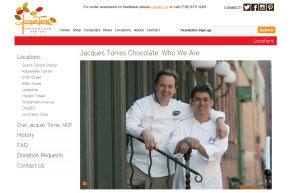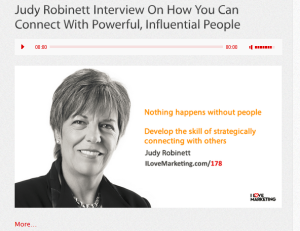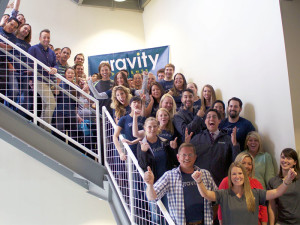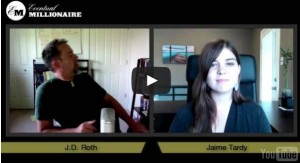How NOT to Blow Your Big Chance When Speaking In Front of a Group
A while back I witnessed yet another sad example of someone squandering one of the most precious marketing opportunities possible: getting the chance to present in front of a group of potential buyers.
This happened at an association meeting of customer service professionals. A rep from a CRM (customer relationship management) software company had the chance to give a five minute “commercial” because his company had sponsored the event.
Rather than use his precious time to communicate how his business helps solve problems that were relevant to the audience, he simply talked about his company and stated facts about the customer service industry that were common knowledge to anyone in the industry.
People waited patiently until he was over so the “real speaker” (yours truly) could get up and talk to them about the topic they really were interested in.
I felt bad for this man and his company because I knew they had spent a lot of money to get the chance to tell people how their product could help them, and all he accomplished was boring the audience.
Does this sound familiar?
Have you ever been “that guy”?
Maybe you also have been the main speaker at an event or a breakout session at a conference, and found yourself doing what a lot of vendor reps and consultants who aren’t professional speakers do. Maybe you did any or all of the following:
- Started off with a lame joke.
- Transitioned into a long description of what your company does.
- Spent most of your time giving a “State of the Union” speech that merely reminds the audience of all the problems they were facing and had come to get answers to.
- Gave 30,000 foot high “answers” that are commonsense, such as “Give great customer service”, “You need to have quality employees if you’re going to give quality customer service” or “Turnover is costing you a lot; so it’s important to stop turnover.”
- Read off of your PowerPoint slides….bullet point list item after bullet point list item.
Does this sound hauntingly familiar?
If so, it’s time to upgrade your presentational approach by adding stories and concrete examples.
Make Your Presentation Exponentially More Interesting and Persuasive By Adding Three Story Genres
Here are three types of stories that will make your presentation—whether it’s five minutes or sixty minutes—far more fascinating and persuasive.
1. “I Feel Your Pain” Stories –This story genre includes stories of your own experience that mirrors the audience’s major challenges. It also includes stories of clients or customers with challenges that mirror the audience’s. Either way, you are letting them know “I know where you are coming from.” You are also reminding them of the pain the unsolved problem is causing them.
By reminding them of the pain they have, you increase their desire to listen to what you’re going to tell them. So one way to start off with a bang is to tell a story that immediately taps into their pain and…shows that you “get them.”
So for instance, when I do programs on how to engage people in constructive conversations around difficult topics, I often start off with a really difficult conversation I once had with a co-worker. In the opening, I usually only tell the first part of the story, where I share how angry I was at him and how I obsessed about my not having a witty comeback, and how I plotted my revenge. When I share this with groups, I see nods of recognition. They know what it’s like and…they get it that I have faced the same struggles as they have. My story also reminds them of the pain they have felt because of conflict they were unwilling to address because they didn’t think they had the skills to make the conversation work.
2. Price and Promise Stories – Share a story about how a client or customer of yours was dealing with a problem the audience can relate to, and how your solution made a difference. Price and Promise Stories make clear the price the audience member pays for NOT addressing the problem, and the benefits of successfully addressing the problem.
As in the “I Feel Your Pain” story, Price and Promise Stories are designed to heighten the audience’s interest and make them want to hear more. However, don’t go into describing your solution, step-by-step, if you start off with this type of story. When you start off with a Price and Promise Story, it’s meant as a tool to spark interest.
Later on in your presentation when you are describing how you solve the audience’s relevant problems, you can use this story genre to describe what you do. You can also use an “open loop” Price and Promise Story to start your presentation. Thi is where you share the “before picture”—i.e. the “problem state”—and then tell the audience that you will share with them later in the session what you did to achieve a positive outcome.
This is called “salting”, as in “making them thirsty for what you are going to tell them”. The story I started off this post with is an example of salting. It starts off with a story that communicates “This is the price you pay for being an uninteresting speaker…a huge lost marketing opportunity”. While I don’t explicitly say “Keep reading and I will tell you how to rectify this”, you understand that is where we are going. If you can relate to the story, you wanted to hear more about how NOT to be “that guy.”
3. “What I mean by that” Stories – These stories take your key concepts and help listeners understand what they mean at an emotional and visceral level, rather than have them vaguely understood at an intellectual story. When we use abstract terms without concrete examples, we risk people either not understanding what we mean or….believing they do understand, when in fact they don’t.
You prevent this from happening by following each key point with “So for instance…” or “Here’s an example of what I mean…”, and then giving a concrete example or sharing a short story that illustrates that point.
Doing this will make a HUGE difference in your audience’s ability to comprehend what you’re saying.
So for instance, when I give programs on constructive conversations, I talk about the language pattern I call The Multiple Choice Opener. This language pattern makes it more comfortable for people to speak honestly about a tough issue. When I describe the Multiple Choice Opener, I don’t just list the characteristics of this language pattern. I give the audience an example. I say “So…for instance…let’s say you did a performance review with Mary…” I then describe the scenario and how the Multiple Choice Opener would be used in the situation.
Other times, I illustrate what the Multiple Choice Opener looks and sounds like in real life by sharing a short story about my using this language pattern with my young daughter when she seemed displeased with the idea of helping me wash dishes.
By giving a concrete example or sharing a short story, you help the listener play a movie inside their mind of what you are talking about, so they understand what it looks and sounds like in real life.
By making abstract terms concrete, you help your listeners move beyond “sort of knowing intellectually” what you are saying to fully grasping at an experiential level what you mean and why it’s significant. When this happens, your message becomes more understandable, more interesting, and more persuasive.
So Use Stories to Make Your Points More Understandable and Your Presentations More Compelling
So…don’t be like the typical vendor or professional who does great work or has a great product, but doesn’t know how to talk about it in a way that makes others want to listen.
Don’t blow your big opportunity to spread your message when you do get the chance to speak in front of a group.
Start off your presentations with a story and, use stories and examples to make your points come alive.
Doing so will make you a far more fascinating and compelling speaker.
Adding storytelling to your presentations will also making speaking a lot more fun for you, and… it will make listening to you a lot more fun for your audience.
For examples of these types of stories, check out the Blog Category:









